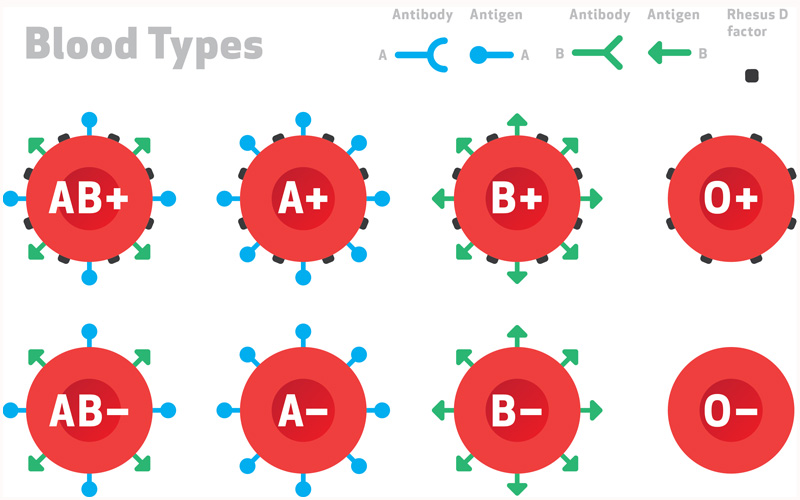
To the naked eye, everyone’s blood looks the same. But if you look at blood samples under a microscope, it’s obvious that there are some big differences.
An Austrian scientist named Karl Landsteiner was the first person to explore this discovery in 1909. He noticed two distinct chemical molecules that were sometimes present on the surface of the red blood cells. He labeled one molecule "A" and the other molecule "B." From there, he began labeling blood types. We still use this system today.
Here’s how it works:
If a red blood cell has only "A" molecules on it, it is type A.
If a red blood cell has only "B" molecules on it, it is type B.
If a red blood cell has a mixture of both molecules, it is type AB.
If a red blood cell has neither molecule, it is type O.